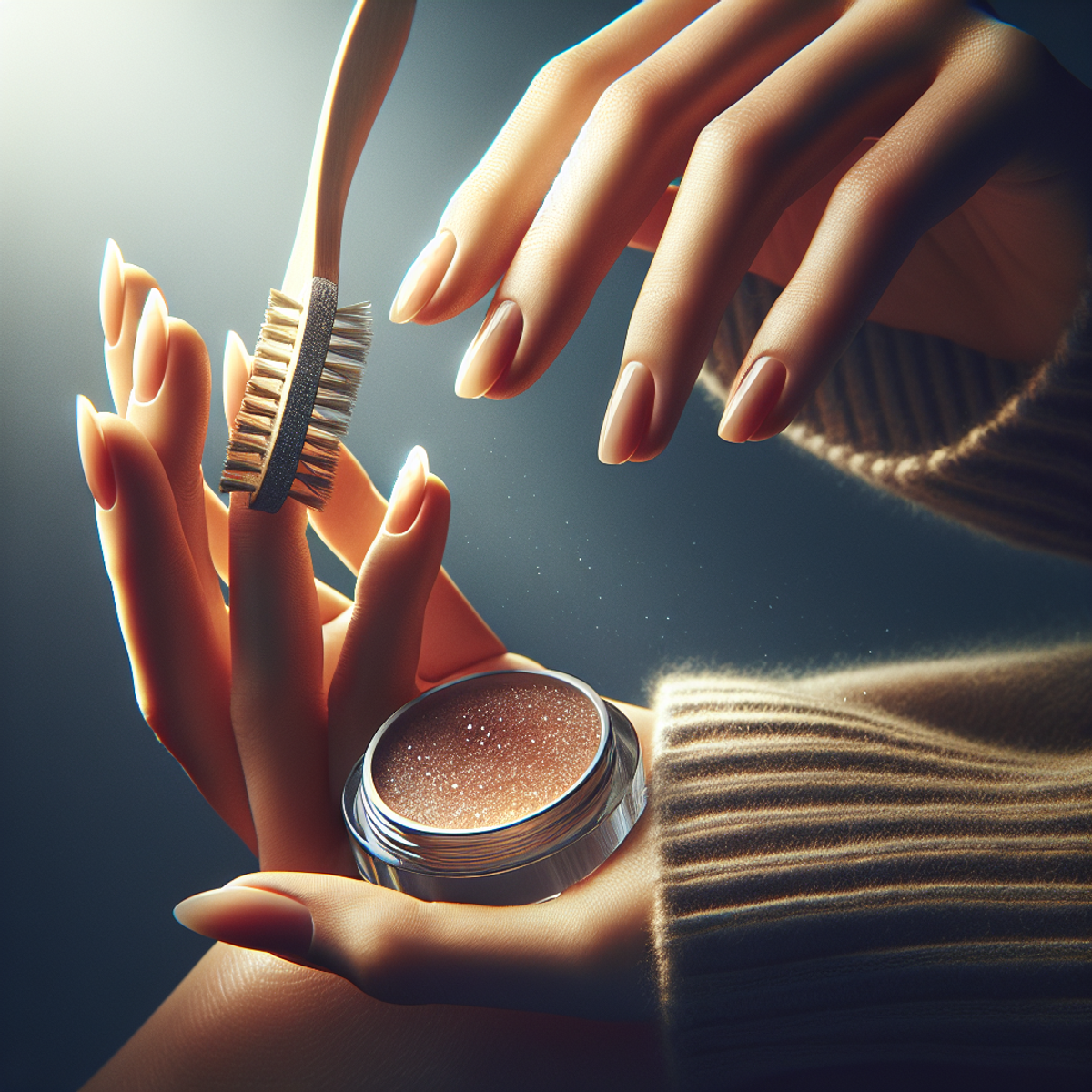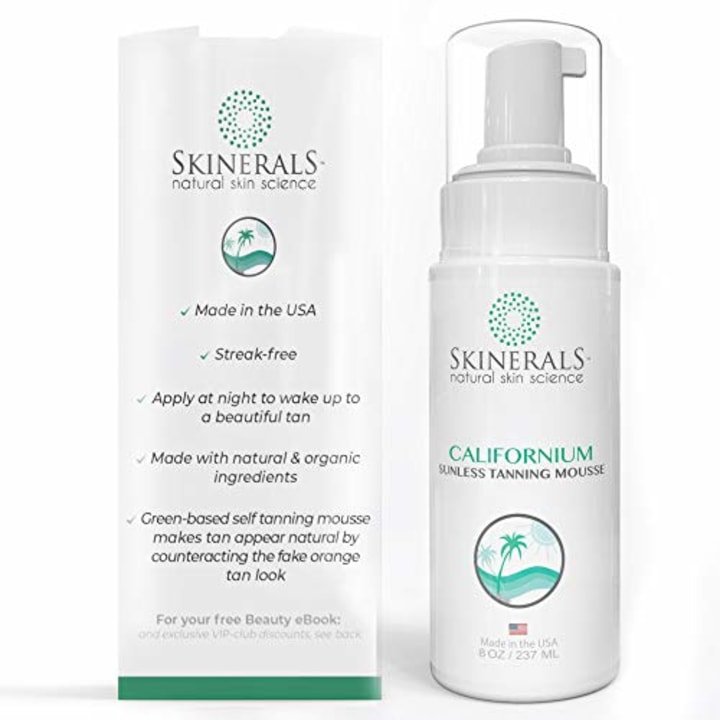Nail Exfoliation: The Missing Piece to Your Perfect Nail Care Routine

Introduction
Nail exfoliation is an important part of taking care of your nails. It involves getting rid of dead skin cells and buildup on the nails, which is crucial for keeping them healthy and looking good. By making nail exfoliation a regular part of your routine, you can have smoother, stronger, and more resilient nails.
But why is nail exfoliation so important? While many people focus on grooming their nails and applying nail polish, they often forget about the importance of preparing the nail surface through exfoliation. This simple step plays a big role in ensuring that your manicures turn out perfectly and last longer.
In this article, we will explore everything you need to know about nail exfoliation – its benefits and different techniques – to help you take better care of your nails. Whether you’re already a nail lover or just someone who wants to improve their self-care habits, understanding how nail exfoliation can transform your nails is key.
Understanding Nail Exfoliation
Nail exfoliation is an essential part of keeping your nails healthy and beautiful. It involves getting rid of dead cells and buildup from your nails, which helps improve their health and appearance. Having dead cells and buildup on your nails can cause various problems, including:
- Brittleness: Dead cells and buildup can make your nails weak and prone to breaking easily. They can also create an uneven surface on your nails.
- Discoloration: Buildup on your nails can lead to them looking dull or yellowed.
- Slow Growth: Dead cells can hinder the natural growth of your nails, making them grow slowly or unevenly.
By exfoliating your nails, you can effectively deal with these issues and promote stronger, smoother, and more vibrant nails.
How Nail Exfoliation Works
There are two main ways to exfoliate your nails: physically or chemically.
1. Physical Exfoliation
Physical exfoliation involves using scrubs or tools to gently remove dead cells and buildup from the surface of your nails. This method is great for immediate results and providing a smooth canvas for nail polish application.
2. Chemical Exfoliation
Chemical exfoliation utilizes alpha hydroxy acids (AHAs) or beta hydroxy acids (BHAs) to dissolve dead skin cells and stimulate cell turnover on the nail bed. This method is effective for long-term maintenance and improving overall nail health.
Benefits of Regular Nail Exfoliation
Making nail exfoliation a regular part of your routine offers numerous benefits:
- Enhanced Appearance: Removing dead cells and buildup reveals healthier-looking nails with a natural shine.
- Improved Product Absorption: Exfoliated nails are better able to absorb nourishing treatments like cuticle oil or nail strengthener.
- Stronger Nails: By removing obstacles like dead cells, your nails can grow stronger and be less prone to brittleness or flakiness.
- Prevention of Nail Issues: Regular exfoliation helps prevent common nail problems such as brittleness, discoloration, and slow growth.
How Often Should You Exfoliate Your Nails?
The frequency of nail exfoliation depends on your individual needs and lifestyle factors. As a general guideline:
- If you frequently wear nail polish or use products that can cause buildup (e.g., adhesive nails, gel polish), aim to exfoliate once a week.
- For those with naturally weaker or slower-growing nails, exfoliating every two weeks may be sufficient.
- Pay attention to how your nails look and feel – if they start to appear dull, uneven, or weak, it may be a sign that exfoliation is needed.
Remember to always be gentle when exfoliating your nails and avoid overdoing it, as excessive or aggressive exfoliation can damage the nail plate.
Nail Exfoliation During Chemotherapy Treatment
It’s worth mentioning that individuals undergoing chemotherapy treatment may experience specific challenges with their nails. In such cases, it’s important to follow specialized care guidelines, including [nail exfoliation](https://www.cancerpal.co.uk/post
Different Techniques for Nail Exfoliation
Nail exfoliation can be done using different techniques, both physical and chemical. Each technique has its own advantages and can be used depending on personal preferences and nail condition. Let’s explore these techniques in detail:
1. Physical Exfoliation
Physical exfoliation involves the use of scrubs, brushes, or tools to manually remove dead cells and buildup from the nails. This technique is effective in sloughing off rough patches and improving the overall appearance of the nails. Here’s a step-by-step guide on how to perform physical exfoliation:
- Start by preparing a homemade scrub or using a store-bought one specifically formulated for nail exfoliation. Look for scrubs that contain gentle exfoliating particles like sugar or salt.
- Wet your hands and apply a small amount of scrub onto your nails and cuticles.
- Gently massage the scrub onto each nail in circular motions for about 1-2 minutes, paying attention to the areas around the cuticles.
- Rinse off the scrub with warm water and pat your nails dry with a towel.
- After exfoliating, it’s important to moisturize your nails and cuticles with a nourishing cream or oil to replenish moisture.
Remember to be gentle while exfoliating to avoid causing any damage to your nails or cuticles. Over-exfoliating or using harsh tools can lead to irritation and sensitivity.
Exfoliating Cuticles
While focusing on nail exfoliation, it’s essential not to neglect the cuticle area. Dead skin cells can accumulate around the base of the nails, leading to dryness, hangnails, and even infections if not properly addressed. Here’s how you can gently exfoliate your cuticles:
- Soak your hands in warm water for a few minutes to soften the cuticles.
- Use a cuticle pusher or an orange stick wrapped in cotton to gently push back the cuticles.
- Apply a cuticle remover gel or cream to help loosen any excess dead skin.
- Gently massage the product into the cuticle area using circular motions.
- Use a cuticle nipper to carefully trim any loose or excess skin, being cautious not to cut too deep or cause injury.
- Rinse off any remaining product and thoroughly dry your hands.
- Finish the process by applying a nourishing cuticle oil or cream to keep the area moisturized.
By regularly exfoliating your cuticles, you can maintain their health, promote nail growth, and achieve a neater manicure.
In addition to physical exfoliation, let’s explore another technique called chemical exfoliation.
2. Chemical Exfoliation
Chemical exfoliation involves the use of products containing alpha hydroxy acids (AHA) or beta hydroxy acids (BHA) to dissolve dead skin cells and promote nail renewal. One popular chemical exfoliant for nails is glycolic acid. Here’s how you can incorporate chemical exfoliation into your nail care routine:
- Look for nail products specifically formulated with AHA or BHA ingredients, such as glycolic acid.
- Apply a thin layer of the chemical exfoliant onto clean, dry nails and cuticles.
- Allow the product to sit for the recommended time specified on the packaging (usually a few minutes).
- Gently rinse off the product with warm water and pat dry.
- Follow up with a moisturizer or cuticle oil to keep your nails hydrated after chemical exfoliation.
Chemical exfoliation can be an effective method for addressing stubborn buildup or discoloration on the nails. However, it’s important to follow the instructions provided by the product manufacturer and avoid overusing these potent exfoliants to prevent irritation.
Both physical and chemical exfoliation techniques offer unique benefits for maintaining healthy nails. Experiment with different methods and find what works best for you. Remember to be consistent with your exfoliation routine, but also listen to your nails’ needs and adjust the frequency accordingly.
2. Chemical Exfoliation
Chemical exfoliation is another effective method for promoting nail renewal and maintaining healthy nails. Unlike physical exfoliation, which involves the use of scrubs or tools, chemical exfoliation relies on the use of specific agents to gently remove dead skin cells and buildup from the nails.
Exploring Chemical Exfoliation
There are two main types of chemical agents used in nail exfoliation: Alpha Hydroxy Acids (AHAs) and Beta Hydroxy Acids (BHAs). These ingredients work by breaking down the bonds between dead skin cells, allowing them to be easily sloughed away. Here’s what you need to know about each type:
- Alpha Hydroxy Acids (AHAs): AHAs are water-soluble acids that work by loosening the outermost layer of dead skin cells, revealing fresh, healthier skin underneath. In nail care, AHAs are particularly effective in promoting nail renewal and improving the overall appearance of nails. One popular AHA used in nail exfoliation is glycolic acid, which has small molecular size and can penetrate deeply into the skin.
- Beta Hydroxy Acids (BHAs): BHAs are oil-soluble acids that can penetrate deeper into the pores and help dissolve excess oil and dead skin cells. While not as commonly used in nail exfoliation as AHAs, BHAs can still be beneficial for those with oily or acne-prone skin around the nails.
Recommended Products for Chemical Nail Exfoliation
When it comes to chemical nail exfoliation, there are several products available that contain AHAs or BHAs. These products are specially formulated to promote gentle exfoliation without causing irritation or damage to the nails. Here are a few recommended options:
- [Product 1]: This exfoliating serum contains glycolic acid and other nourishing ingredients to promote healthy nail growth and reduce the appearance of rough, dry cuticles.
- [Product 2]: A gentle nail cream enriched with AHAs and BHAs to exfoliate and hydrate the nails, leaving them looking smooth and revitalized.
- [Product 3]: An exfoliating gel that combines AHAs and BHAs to remove dead skin cells and reveal healthier, brighter nails.
Benefits of Glycolic Acid
Glycolic acid is a popular choice for chemical nail exfoliation due to its effectiveness and versatility. Here are some key benefits of using glycolic acid in your nail care routine:
- Promotes Nail Renewal: Glycolic acid helps stimulate collagen production, which can improve the strength and appearance of nails over time.
- Softens Cuticles: By gently exfoliating the cuticle area, glycolic acid can help soften and smooth rough cuticles, making them easier to push back or remove.
- Improves Nail Texture: Regular use of glycolic acid can help reduce the appearance of ridges and uneven texture on the nails, resulting in a smoother surface.
Incorporating chemical exfoliation into your nail care routine can provide additional benefits alongside physical exfoliation. The two methods can be used interchangeably based on individual needs. For example, if you have stubborn buildup or want to address specific concerns like cuticle softening, chemical exfoliation with products containing AHAs or BHAs may be more effective. However, it’s important to remember that chemical exfoliation should be done with caution and following the instructions provided with the specific product.
Enhancing Your Nail Exfoliation Routine
When it comes to nail care, exfoliation is just one piece of the puzzle. To truly elevate your nail exfoliation routine and achieve perfect nails, there are a few additional steps and supporting products that can make a big difference. Here are some best practices for enhancing your nail exfoliation routine:
1. Supporting Products and Ingredients
To complement the exfoliation process and maximize the benefits for your nails, consider incorporating these suitable nail care products:
- Nail strengtheners: Nail strengtheners are formulated to fortify and harden the nails, helping to prevent breakage and promote healthy growth. Look for strengtheners that contain ingredients like keratin, calcium, or vitamin E.
- Cuticle oils: After exfoliating your nails, it’s important to nourish and hydrate the cuticles. Cuticle oils are designed to moisturize and soften the cuticles, making them easier to push back or remove. Look for oils rich in ingredients like jojoba oil, almond oil, or vitamin E.
- Nourishing treatments: Treatments specifically formulated for nails can provide extra nourishment and hydration. These treatments often contain ingredients like shea butter, coconut oil, or botanical extracts that help replenish moisture and improve nail health.
By incorporating these supporting products into your nail care routine, you can enhance the effects of exfoliation and promote stronger, healthier nails.
2. Nail Hardeners for Long-Term Nail Health
One popular option for maintaining healthy nails after exfoliation is using a nail hardener. Nail hardeners create a protective barrier on the surface of the nails, helping to prevent chipping, splitting, and breakage. They often contain strengthening ingredients like formaldehyde resin or nylon fibers. Applying a nail hardener regularly can help maintain the benefits of exfoliation and protect your nails from daily wear and tear.
2. Maintaining Nail Hydration
After exfoliating, it’s important to add moisture back into your nails and the skin around them. This helps keep your nails healthy and looking good. Here are some things to keep in mind:
- Hydrating Techniques: After exfoliating, use a thick moisturizer or cuticle oil on your nails and cuticles. Gently massage it in so that it gets absorbed well.
- Nail Hardener Application: After exfoliating, you may want to apply a nail hardener or strengthener to make your nails stronger and less likely to get damaged. This extra step can help maintain the benefits of exfoliation by promoting nail strength and resilience.
- Precautions for Successful Exfoliation: To make sure that exfoliating is effective and safe, remember these tips:
- Don’t exfoliate too often, as this can make your nails dry and irritated.
- Use products that are gentle enough for regular use.
- Always moisturize after exfoliating to prevent dryness.
- Moisturizing Post-Exfoliation: Use a good-quality moisturizer made specifically for nails and cuticles. Look for ingredients like shea butter, vitamin E, or jojoba oil, which are known for nourishing the skin.
Keeping your nails hydrated is crucial for maintaining the benefits of exfoliation and ensuring that your nails stay strong and healthy. By following these tips regularly, you can take good care of your nails.
Lifestyle Habits for Healthy Nails
Taking care of your nails goes beyond exfoliation and hydration. Incorporating healthy lifestyle habits can significantly impact the overall wellness of your nails. Here’s what you need to know:
1. Take Breaks from Acrylic/Gel Manicures
Regularly subjecting your nails to acrylic or gel manicures can take a toll on their health. These manicure techniques, although aesthetically pleasing, can weaken the nails over time. It’s essential to give your nails a break from these treatments to allow them to regain strength and integrity. Consider taking intermittent breaks from acrylic or gel manicures to prevent brittleness and damage.
2. Eat a Balanced Diet for Nail Health
A balanced diet plays a crucial role in maintaining strong and healthy nails. Your nails require essential nutrients such as biotin, protein, iron, and vitamins A and C to thrive. Including foods rich in these nutrients, such as eggs, nuts, leafy greens, lean meats, and citrus fruits, can significantly improve the overall health of your nails. Additionally, staying hydrated by consuming an adequate amount of water is vital for nail health.
By adopting these lifestyle habits, you can promote the long-term health and resilience of your nails. Incorporating breaks from damaging manicure techniques and embracing a nutrient-rich diet will contribute to the overall wellness of your nails.
Remember, healthy nails start from within, so nourish them both internally and externally for optimal results.
Conclusion
In conclusion, nail exfoliation is essential for maintaining clean, smooth, and healthy nails. It strengthens the nails, fights brittleness, promotes growth, and prevents the accumulation of dead cells.
Incorporating regular nail exfoliation into your routine can bring long-term benefits for your nails. Here are some key takeaways to remember:
- Make it a habit: Set a weekly schedule for nail exfoliation to ensure consistent care for your nails. This will help prevent the accumulation of dead cells and keep your nails looking their best.
- Choose the right technique: Whether you prefer physical or chemical exfoliation, find the method that works best for you. Physical exfoliation involves using scrubs, brushes, or tools to gently remove dead cells, while chemical exfoliation utilizes products with AHA or BHA to promote nail renewal.
- Support your routine: Enhance your nail exfoliation routine by using supporting products and ingredients. Look for nail care products that strengthen and nourish your nails, such as strengtheners or treatments containing vitamins and proteins.
- Maintain hydration: After exfoliating your nails, don’t forget to hydrate them and the surrounding skin. Moisturizers specifically formulated for nails can help lock in moisture and keep your nails healthy.
By following these tips and incorporating regular nail exfoliation into your routine, you can achieve healthier and stronger nails. Remember that consistency is key when it comes to maintaining the beauty and vitality of your nails.
Take the first step towards healthier nails today by including nail exfoliation in your regular nail care routine. Your nails will thank you for it!










